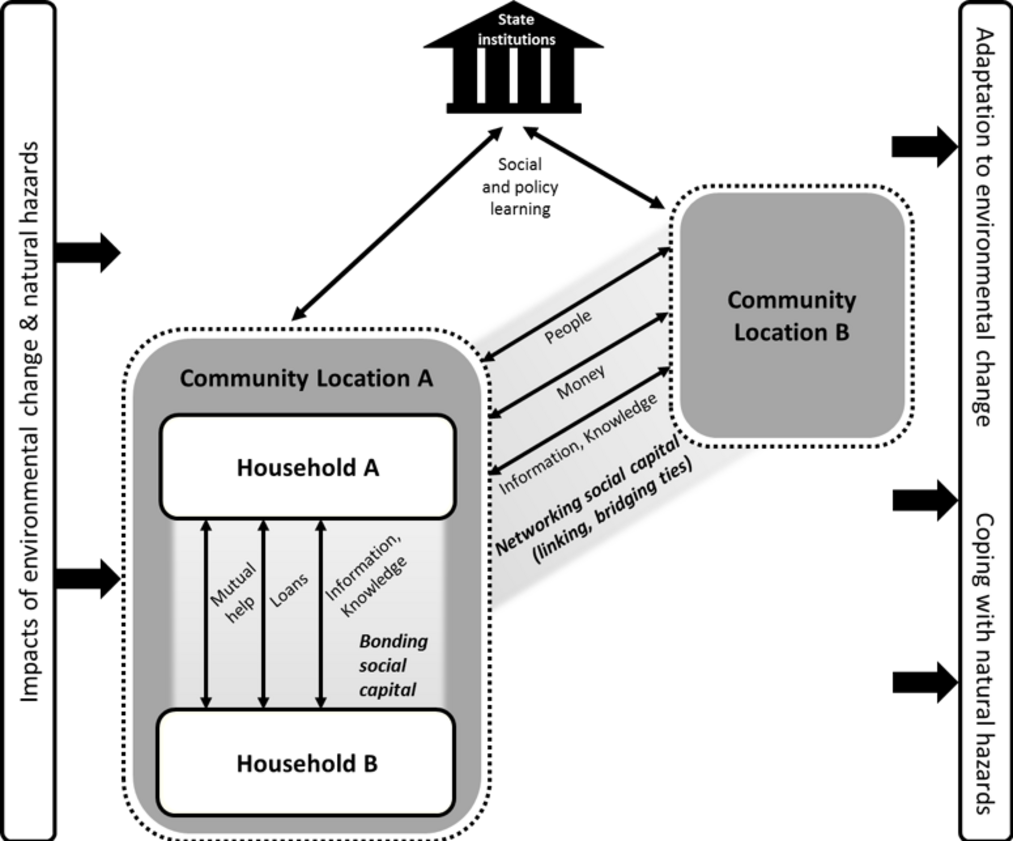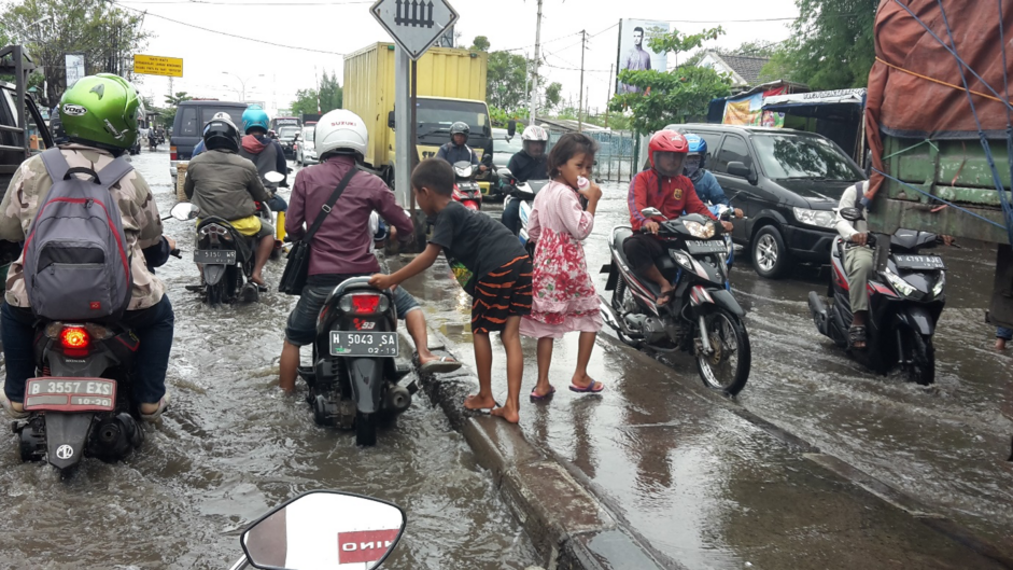TRANSOCAP
Background
Adaptation to coastal flooding and storm surges is a major challenge for the low lying coastal areas of Indonesia. The situation is further aggravated by land subsidence rates up to 15 cm/yr in some areas of Jakarta and Semarang. In this situation, research on adaptation and coping processes towards past, current, and future coastal hazards and sea level rise is crucial to understand socio-economic impacts and adaptive responses of coastal communities and individual households.
Theoretical framework and research objectives
This project is based on the central hypothesis, that translocally anchored social capital plays a key role for building adaptive capacity. Through processes of migration and trans-local networking, people establish social interactions and networks of trust that link coastal rural areas to regional urban centres, megacities, and foreign localities. Through these networks, individuals and communities have access to remittances, loans, mutual help, information, and knowhow that may become valuable resources for community resilience and innovative adaptation (fig. 1).
The project aims to decipher the relations between translocally organised social capital, rural-urban interactions, and adaptive capacity. The goal is to analyse how the (translocal) social capital of coastal communities is structured and how it enables the endowed people to cope with short-term hazards (e.g. cyclones and floods) as well as to adapt to the slowly emerging and less perceivable sea level rise.
Central research questions:
- How do local and translocal social networks generate social capital?
- How does social capital foster adaptation processes of households and communities towards sea level rise and coastal hazards in interlinked rural and urban settings?
- How can social capital reduce socio-economic vulnerability and strengthen the resilience of coastal communities/households towards sea level rise, subsidence and coastal hazards?
- How can collective action and bottom-up initiatives contribute to an effective hazard management?
Study areas and methodology
As this study has a translocal focus, we will apply a multiple place-based approach carried out in rural and related urban areas on Java, Indonesia, in particular in rural areas of Central Java, in Semarang as the regional urban centre, and in Jakarta as the national megacity. Both studied cities are particular vulnerable to sea level rise and coastal hazards. They experience high population pressure on exposed urban settlement areas and both cities are faced with high land subsidence rates (fig. 2, 3). A mixed-method approach will be applied, starting with a qualitative study in 2016, including focus group discussions, key informant and expert interviews in Semarang. Based on the qualitative results an extensive household survey will be conducted in different urban and rural study areas in 2017.
Publications of the TRANSOCAP project:
Bott, L.M., J. Illigner, M.A. Marfai, T. Schöne, and B. Braun (2018), Meeresspiegelanstieg und Überschwemmungen an der Nordküste Zentraljavas – Physische Ursachen und soziale Anpassungsmaßnahmen, Geographische Rundschau, 70(4), S. 4-8.



